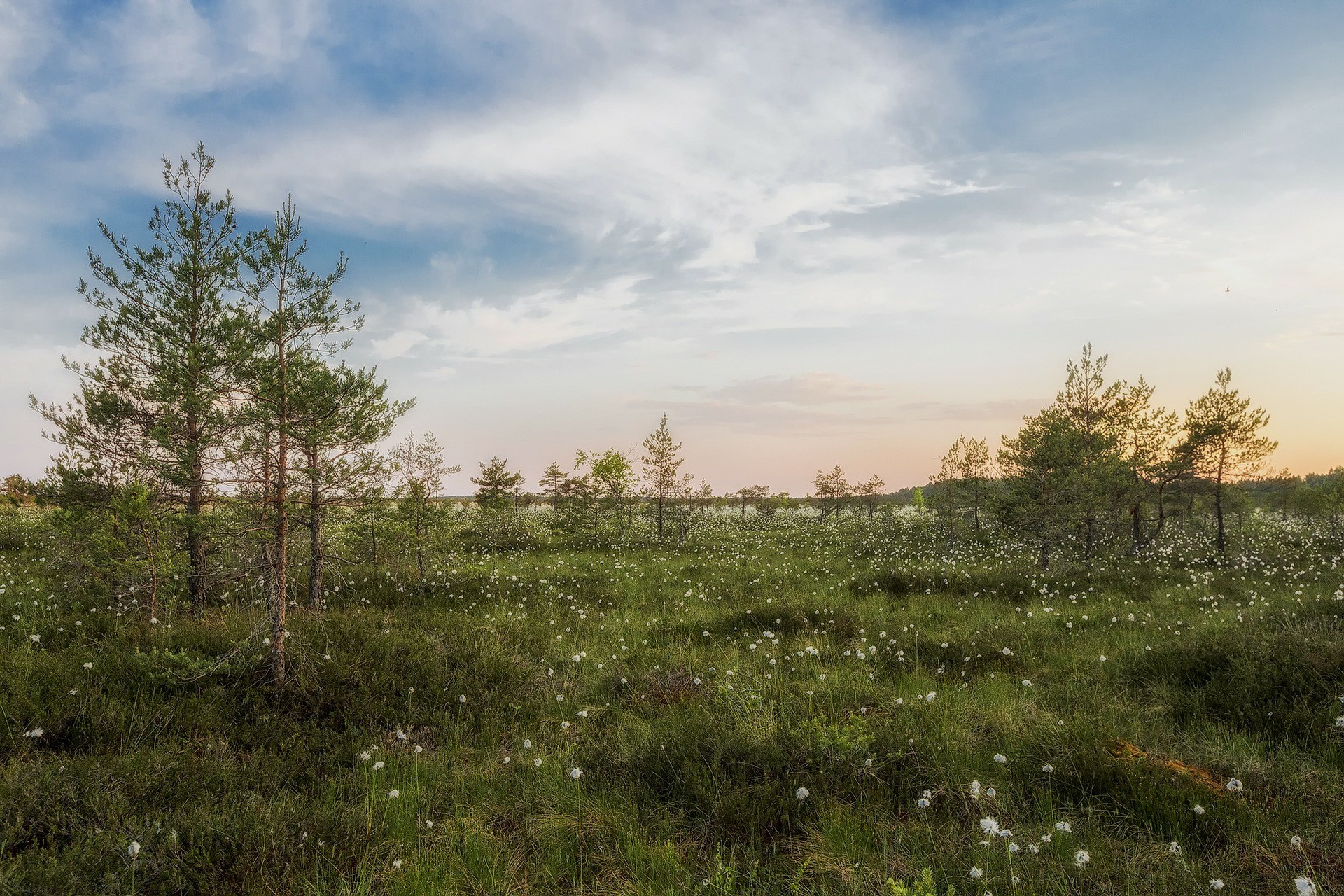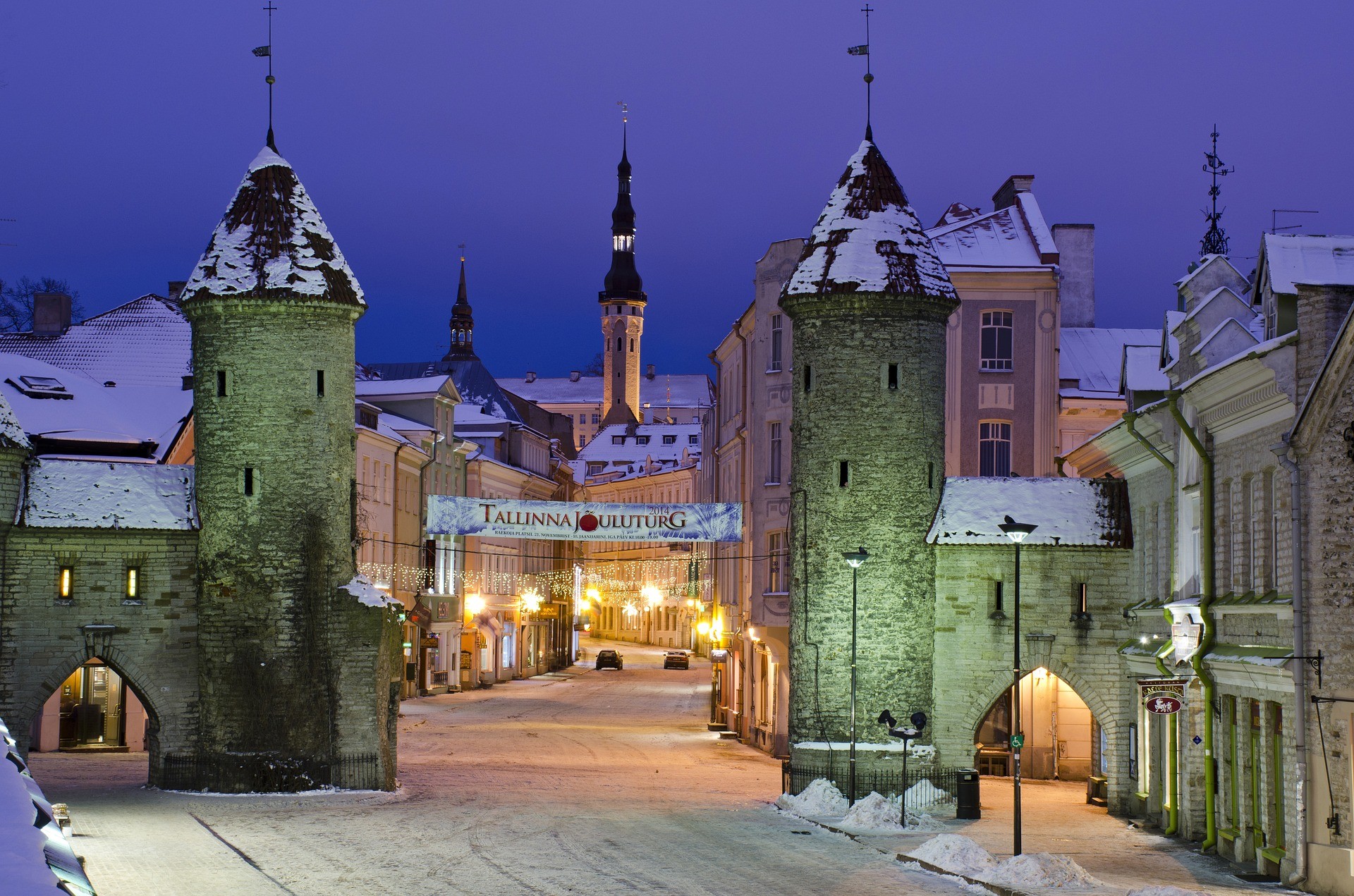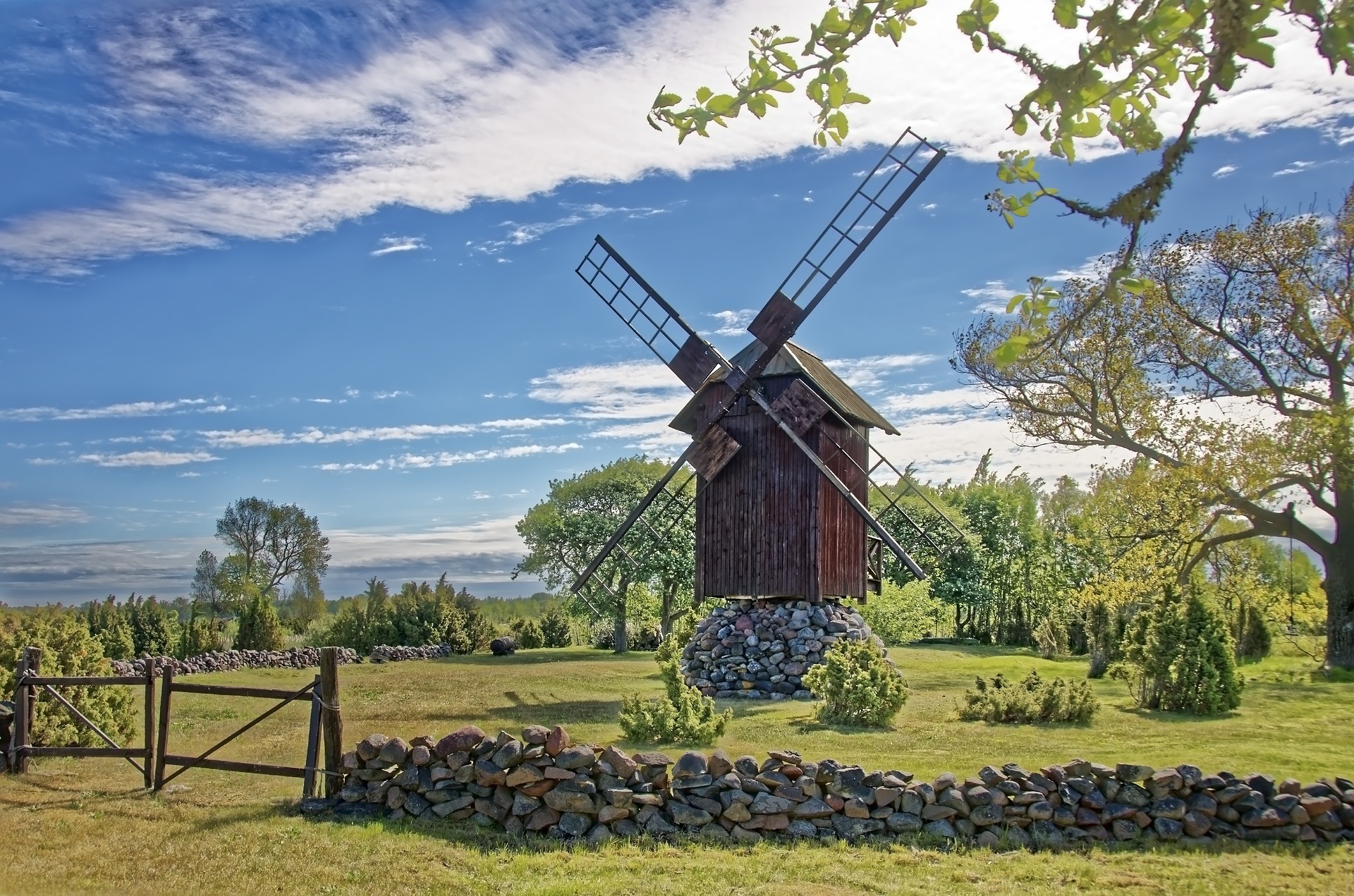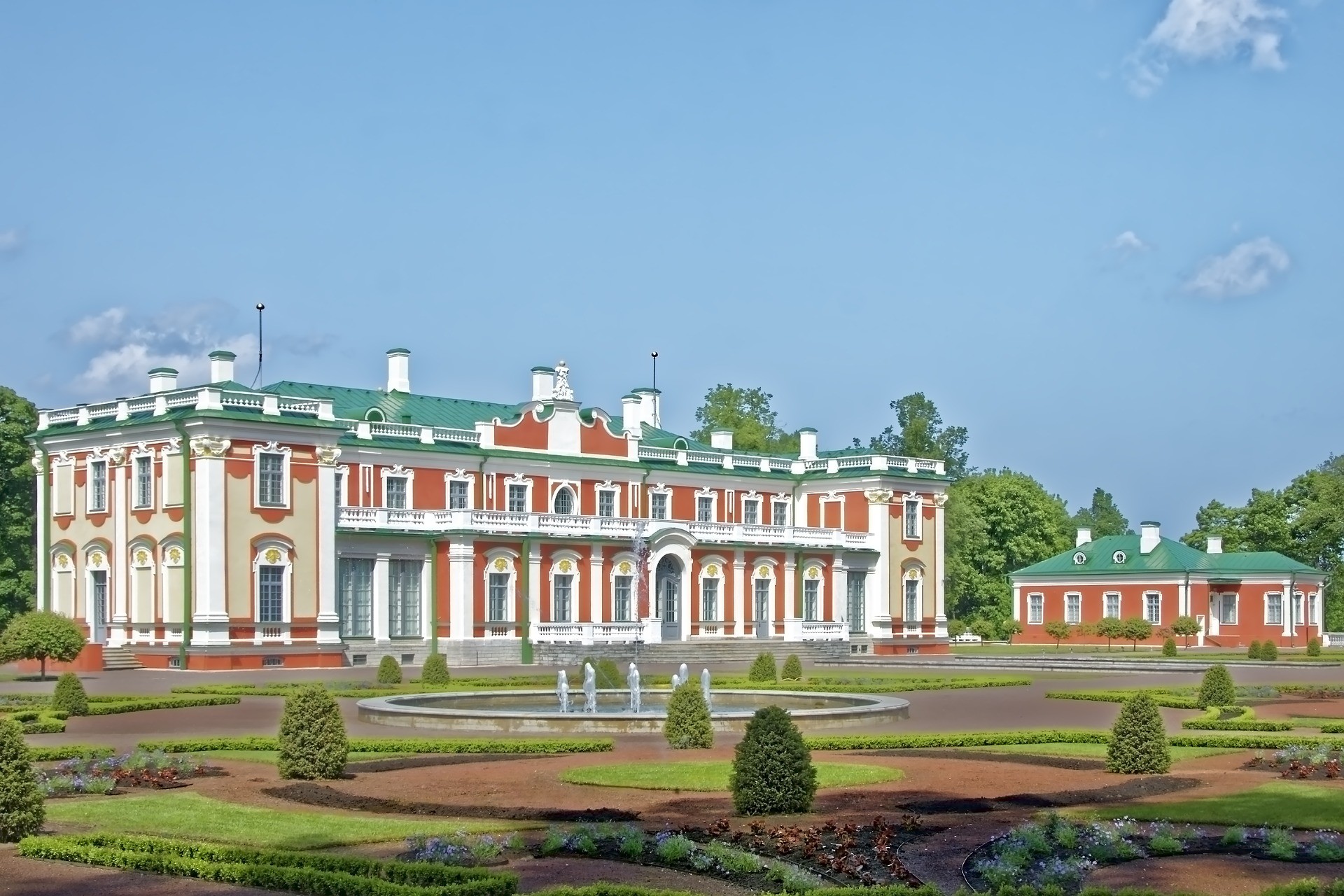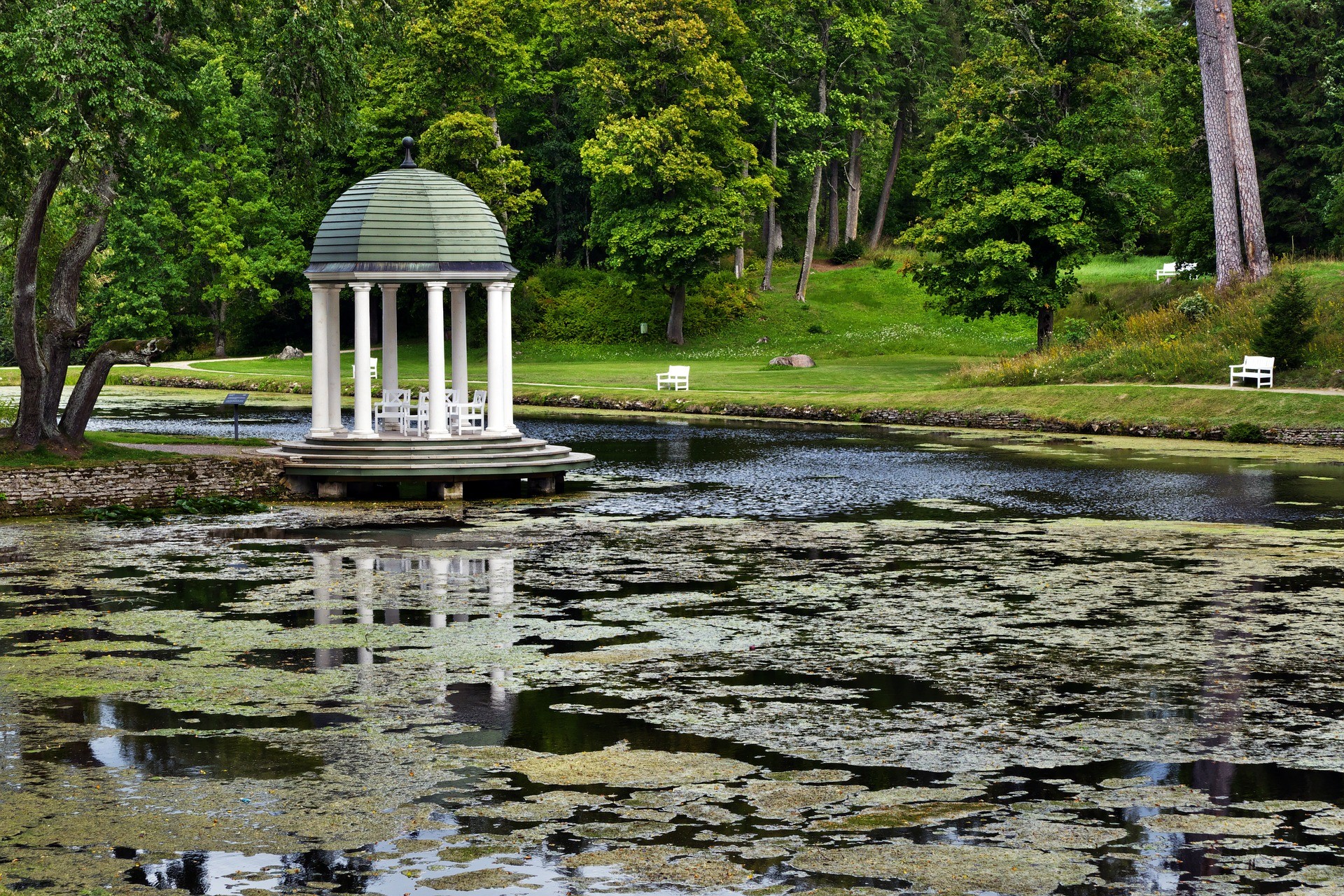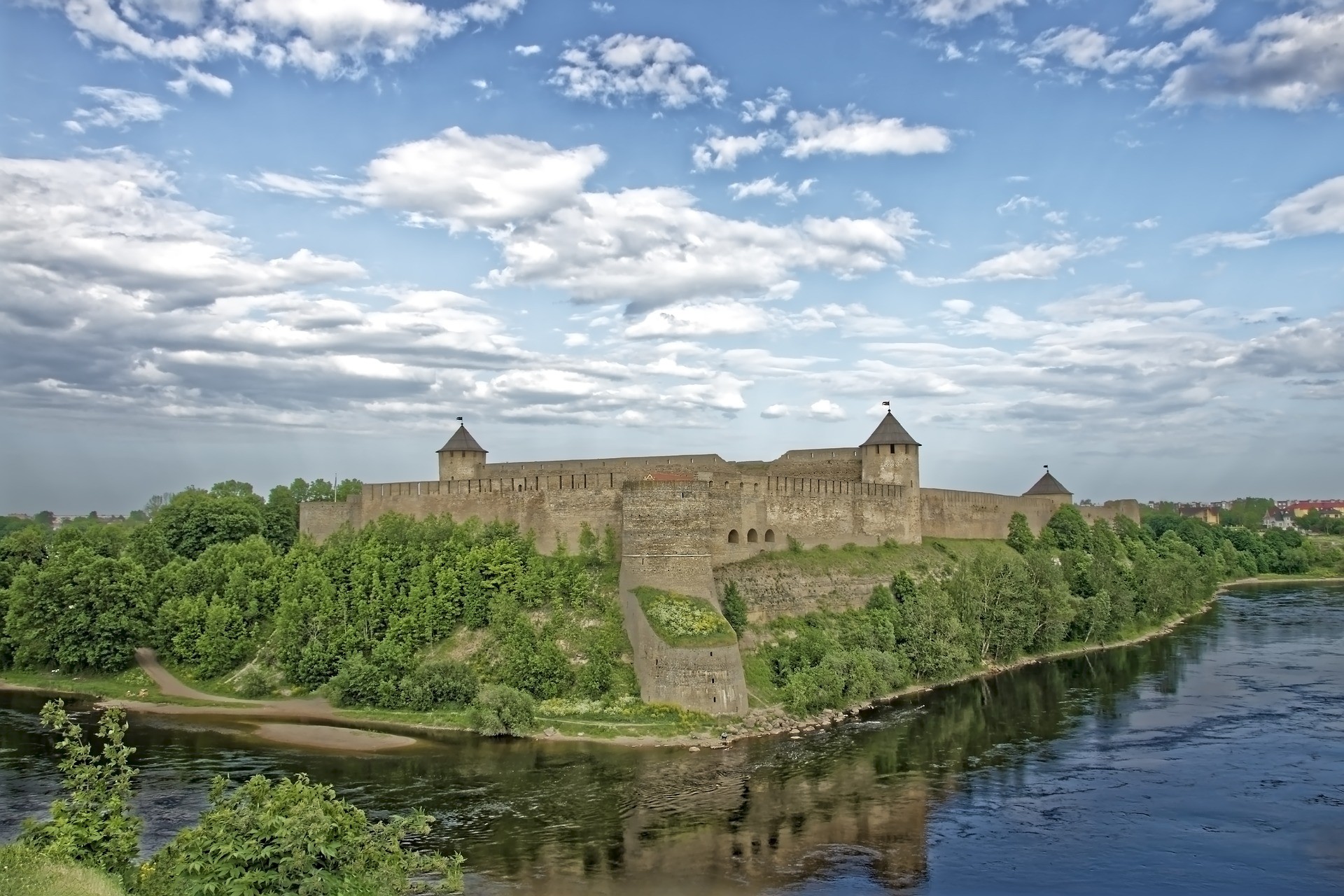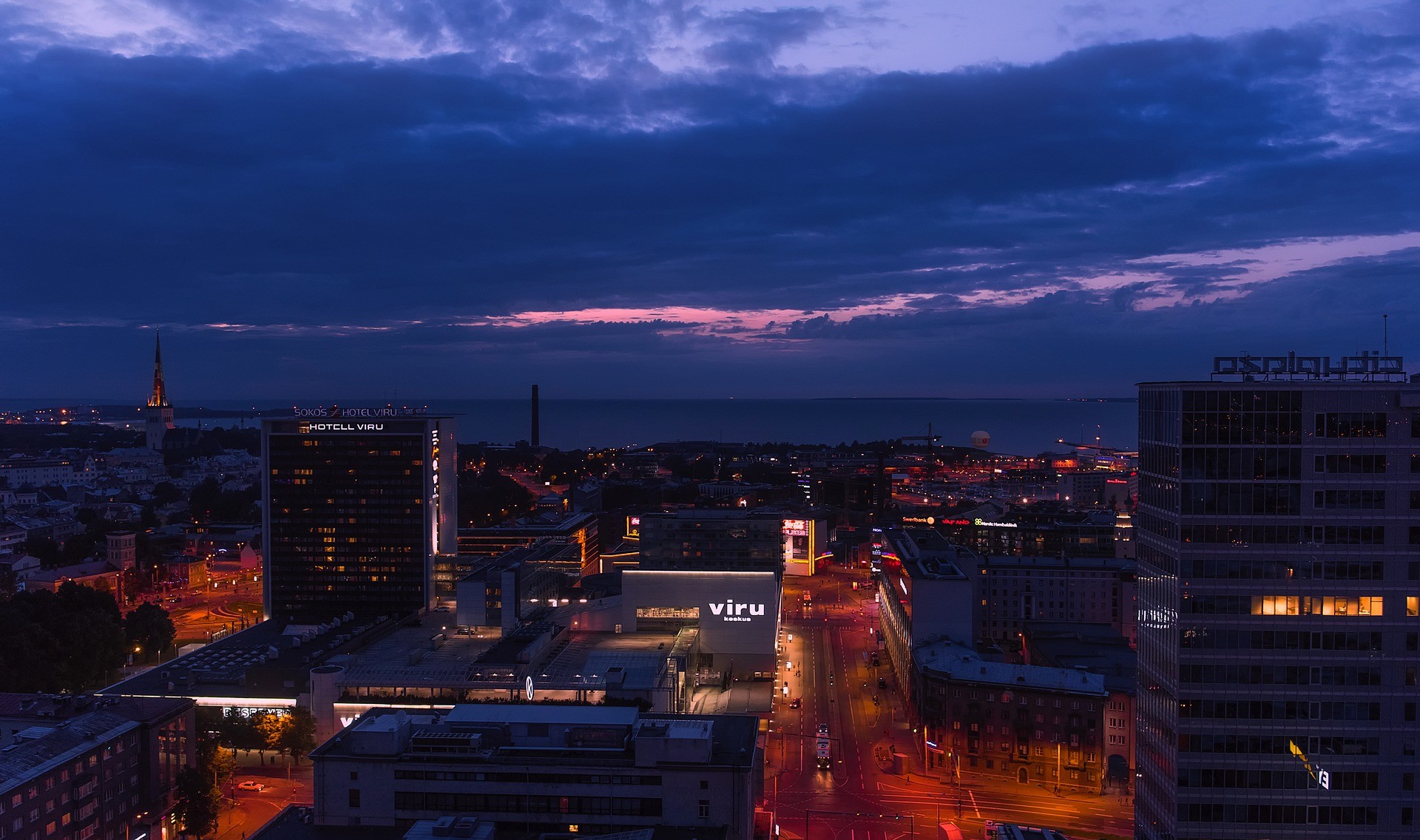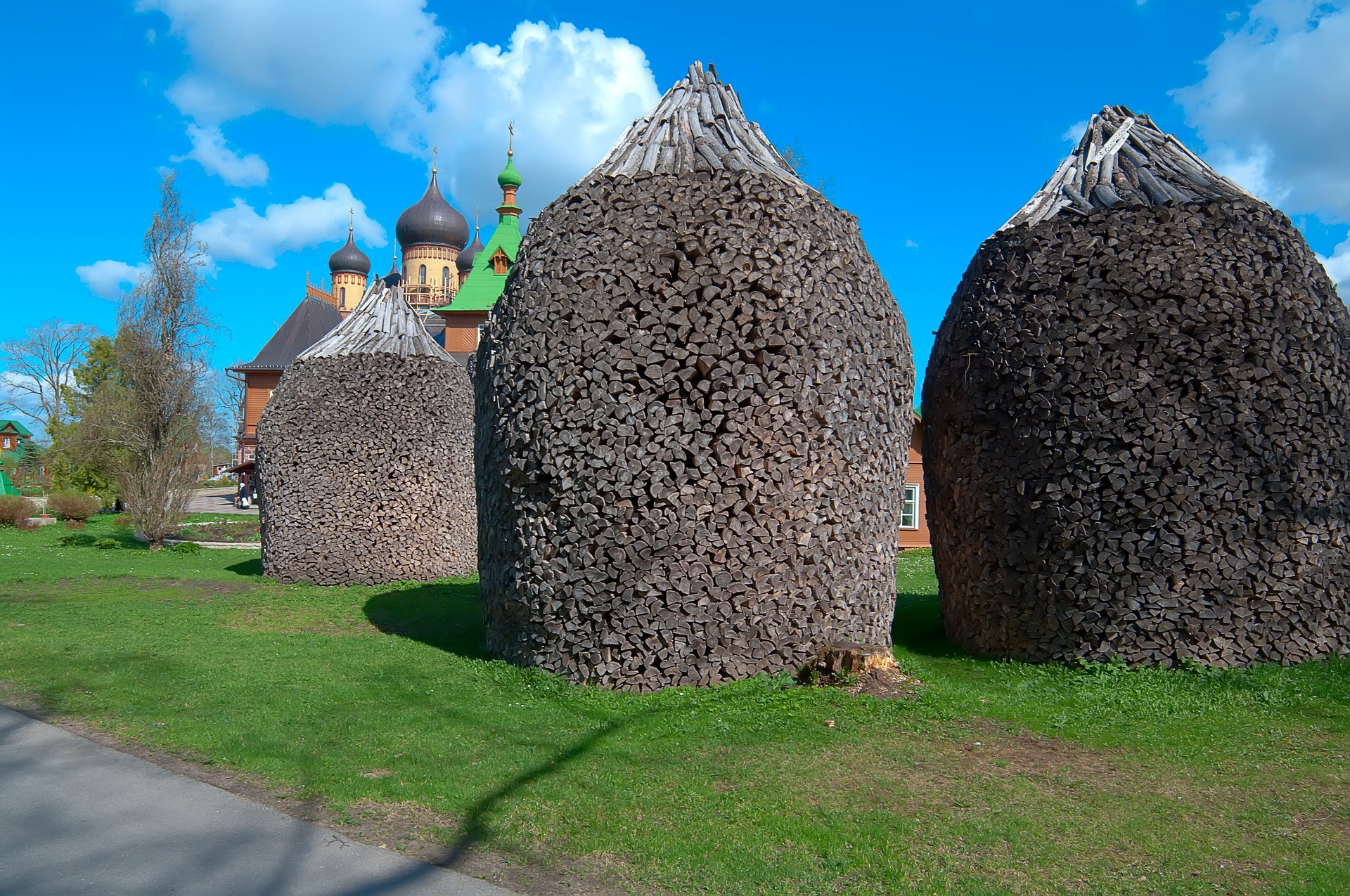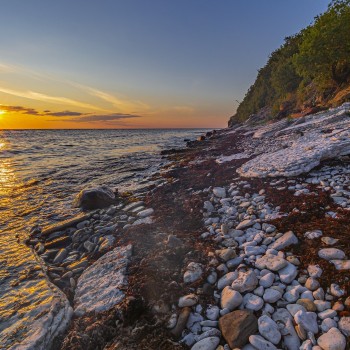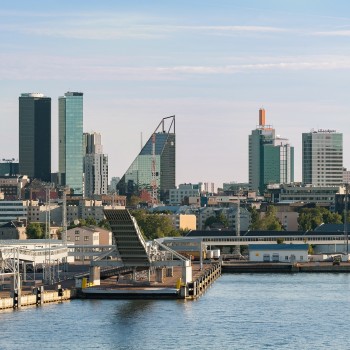Estonia
Estonia
Capital city description
Tallinn, the bustling capital of Estonia, houses the national government of Estonia. The Toompea Castle located on the Toompea hill in the central part of the city houses the Estonian Parliament. The official residence of the Prime Minister of the country, called the Stenbock House, is also located on Toompea hill. The Presidential Palace of Estonia, the ministries of the government, and other government offices are also located here. Tallinn is the political heart of Estonia and the country’s most important center of education, finance, and culture. Many famous international companies like Skype were born in the capital city.
Climate
Seasons in Estonia vary widely. Average temperatures range from 20.9° C in summer, with July usually the hottest month, to -8° C in winter. However, occasionally the temperature may rise to 30° C and above in summer or fall below -23° C in winter. Generally, summer is mildly warm, and winter is cold and snowy. The year's longest day is 21st June, with 19 hours of full daylight.
- Spring: March to May
- Summer: June to August
- Autumn: September to November
- Winter: December to February.
Languages spoken
Standard Estonian is Estonia's official language and is widely spoken. Russian, English, and German are the three most widespread foreign languages spoken in Estonia.
Fun/Fascinating Facts
- Estonians are pretty concerned with keeping their roads safe. In Estonia, it is a law to have safety reflectors attached whether you are walking or biking during the night or when the visibility is inadequate. The reflector can be pinned to your handbag, coat, or any other suitable place where it is easily spottable. Otherwise, you could be fined up to 400 EUR.
- Every single year, several European countries get together for a rather strange sport called "wife-carrying." Wife-carrying is a fun sport in Estonia, originated in Finland in the 1800s. Husbands pick up their wives and race several hundred meters with their better halves upside down on their backs. The track must have two dry obstacles and a one-meter profound water obstacle. Estonia holds a World Wife-Carrying Champions.
- Public transportation in the Estonian capital, Tallinn, is free. Unfortunately, that privilege does not extend to visitors, exclusive to residents of Tallinn only.
- Being a huge fan of swing sets, one Estonian named Ado Kosk invented a new sport called kiiking, which has become quite popular. Participants attach themselves to giant steel swings that rotate a full 360 degrees. It is extreme, insane, and incredibly cool.
- Amazingly, a group of Estonians was fundamental in the invention of Skype, the online video call service, and 44 percent of its employees in Tallinn and Tartu.
Unique Customs/Traditions
- Traditionally, many Estonians lived in barn dwellings: multipurpose farmhouses that served as both the family home and the farm worksite, where the family threshed grains and sometimes kept animal pens.
- In Estonia, military service is compulsory for men aged 19-28 years and lasts less than 12 months.
- In Estonia, If you are invited to it is customary to bring a little present, usually wine, chocolates or flowers. A bouquet or an even number of flowers is a big no-no. It is intended for funerals only.
- It is customary in Estonia to look after the graves of beloved family members and place candles on them for birthdays or any other important anniversary.
- Birthday traditions in Estonia may vary from family to family. Traditionally, when a child wakes up on the morning of their birthday, they go running to the living room where they find their presents and unwrap them, then they eat a delicious cake and enjoy their birthday!
- Traditionally, Estonian celebrated Spring Day is on May 1, when spring officially starts. People dress up as witches the night before and make huge bonfires that serve as a gathering place for dancing, singing, and drinking.
Popular universities
| Name | Description | |
|---|---|---|
| Tartu Ülikool (University of Tartu) | The Tartu Ülikool (University of Tartu) is Estonia's largest and oldest university in Tartu County, established in 1632. It is the national university of Estonia and the only classical university in the country, and also its most significant and most prestigious university. Tartu Ülikool (University of Tartu) offers courses and programs leading to officially recognized higher education degrees in several areas of study. About 35% of University of Tartu study courses are provided partly or entirely online – as web-based courses in Moodle, video lectures, webinars, e-portfolios, and massive open online courses. | |
| Tallinna Tehnikaülikool (Tallinn University of Technology) | Tallinna Tehnikaülikool (Tallinn University of Technology) is a non-profit public higher education institution located in the urban setting of Tallinn, Harju County, established in 1918. Tallinna Tehnikaülikool (Tallinn University of Technology) offers engineering, economics, business administration, social sciences, and information technology degrees. Due to its strong innovation focus, the university is one of the most popular choices for international students studying in Estonia, currently hosting overseas students from more than 60 countries. | |
| Tallinna Ülikool | Tallinna Ülikool (Tallinn University) is a non-profit public higher education institution located in the urban setting of the medium city of Tallinn, Harju County, founded in 2005. Education and research at Tallinn University focus on five core interdisciplinary fields: educational innovation, digital and media culture, cultural competencies, healthy and sustainable lifestyle and society, and open governance. Each of the fields is represented by a school of the University: School of Educational Sciences, Baltic Film, Media, Arts and Communication School; School of Humanities, School of Natural Sciences and Health, and School of Governance, Law, and Society. The School of Digital Technologies is the sixth school, contributing to all fields. | |
| Eesti Kunstiakadeemia (Estonian Academy of Arts) | Faculty of Architecture is the focal point of Estonian architectural education and the most important center of competence in all the creative disciplines related to artificial environments, including interior architecture, architecture, landscape design, and urban planning and design. Founded in 1914, Eesti Kunstiakadeemia (Estonian Academy of Arts) is the only public university in Estonia providing higher education in art, design, architecture, media, art history, and conservation restoration. Eesti Kunstiakadeemia (EKA) offers courses and programs leading to officially recognized higher education degrees such as bachelor's degrees, master's degrees, doctorate degrees in several areas of study. | |
| Eesti Maaülikool (Estonian University of Life Sciences) | Founded in 1951, Eesti Maaülikool (Estonian University of Life Sciences) is the only university in Estonia whose priorities in academic and research activities provide the sustainable development of natural resources necessary for man's existence and the preservation of heritage and habitat. It is a non-profit public higher education institution located in the suburban setting of the small city of Tartu, Tartu County. Eesti Maaülikool (Estonian University of Life Sciences) offers bachelor's degrees, master's degrees, doctorate degrees in several areas of study. | |
| EBS Rahvusvaheline ülikool (Estonian Business School) | EBS Rahvusvaheline ülikool (Estonian Business School) is a private higher education institution located in the urban setting of the medium city of Tallinn, Harju County, founded in 1988. EBS Rahvusvaheline ülikool (Estonian Business School) offers bachelor's degrees, master's degrees, doctorate degrees in several areas of study. Estonian Business School also has a high school part, EBS Gümnaasium, which offers high school education from 10th to 12th grade and a Management Training Centre (EBS Juhtimiskoolituse Keskus) that offers different pieces of training and development programs. | |
| Tallinna Tehnikakõrgkool (TTK University of Applied Sciences) | Tallinna Tehnikakõrgkool (TTK University of Applied Sciences) is the largest university of applied sciences in Estonia, a non-profit public higher education institution located in the urban setting of the medium city of Tallinn, Harju County. Tallinna Tehnikakõrgkool (TTK University of Applied Sciences) is a state professional higher education institution offering competitive higher education and applied research in technology, production, civil engineering, logistics, economics, and welfare. | |
| Sisekaitseakadeemia (Estonian Academy of Security Sciences) | Sisekaitseakadeemia (Estonian Academy of Security Sciences) is a public vocational university located in the suburban setting of Tallinn, Harju County, founded in 1992. Sisekaitseakadeemia(Estonian Academy of Security Sciences) offers bachelor's degrees, master's degrees in several areas of study. It provides professional education for Estonian civil servants under the Estonian Ministry of the Interior. | |
| Eesti Muusika- ja Teatriakadeemia (Estonian Academy of Music and Theatre) | Established in 1919, Eesti Muusika- ja Teatriakadeemia (Estonian Academy of Music and Theatre) is a public university offering higher education in all major fields of music and theatre, located in the medium city of Tallinn, Harju County. In 2021, the Estonian Academy of Music and Theatre was for the third year in a row included in the QS World University Ranking, which is one of the top international ranking systems measuring the popularity and performance of universities from all over the world. | |
| Tartu Tervishoiu Kõrgkool (Tartu Health Care College) | Tartu Tervishoiu Kõrgkool (Tartu Health Care College) is a non-profit public higher education institution located in the small city of Tartu, Tartu County, established in 2005. It is a higher education institution providing training to healthcare specialists in Estonia. Tartu Tervishoiu Kõrgkool (Tartu Health Care College) offers undergraduate, postgraduate, and doctorate programs for International students. | |
Festivals & Events
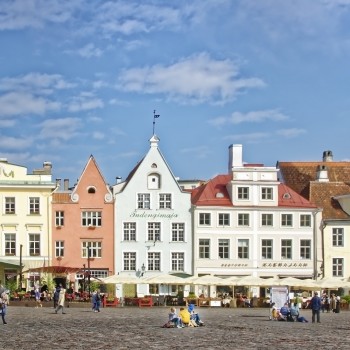
Old Town Days
Date: June
The Old Town Days festival is marked by medieval celebrations, parties, street entertainment, markets, live folk music, exhibitions, theatre plays, fairs, and many other fun activities throughout June. It celebrates the rich old town Heritage of Tallinn's downtown district. The festival's goal is to introduce Tallinn Old Town to the public.
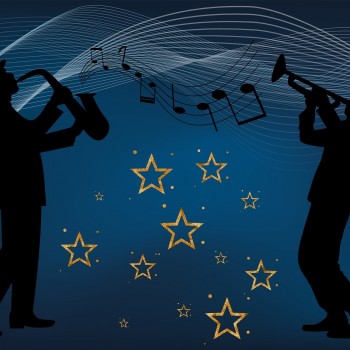
Juu Jaab Festival
Date: First week of July
Juu Jaab Festival has been celebrated for over 21 years in Estonia. It is conducted for around four days in the tiny island Muhu every year. Jazz musicians worldwide gather to put together a musical event loved by all the music fanatics. Muhu island in itself is a beautiful and cozy island that comes to life during this event. The whole event takes place amidst nature and offers the best musical experience for all the visitors. Many food stalls are installed during this festival, serving delicious local street food.
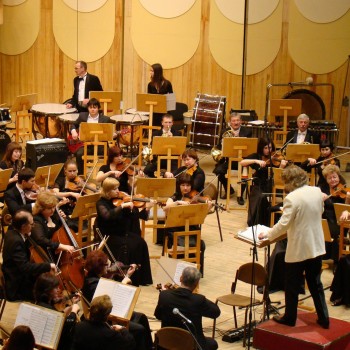
Baroque Music Festival
Date: 28 January - 6 February
Baroque Music Festival, a celebration of classical music, is one of the most highly anticipated festivals in the region, attracting orchestras and musicians from across Europe. The event tours the most prominent venues in Tallinn between January 28 and February 6. The festival offers concerts in Tallinn, Jõhvi, and Tartu; besides Estonian performers, the festival also features acknowledged guests from Russia, Latvia, Israel, Germany, France, and Spain.
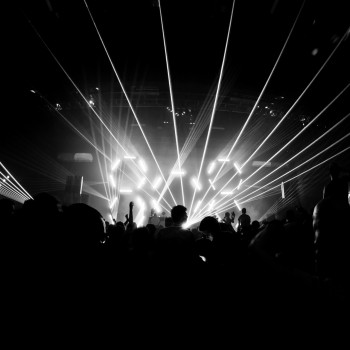
Weekend Festival Baltic
Date: August
Weekend Festival Baltic is an electronic music festival in Pärnu. It was the Estonian edition of the Weekend Festival, the largest dance music festival in Scandinavia.
Held on Pärnu Beach, Weekend's Baltic edition features two outdoor stages with fantastic ocean views and one indoor stage. The festival has an all-out party atmosphere with in-depth stage production and pyrotechnics welcoming almost 50,000 people over three days.
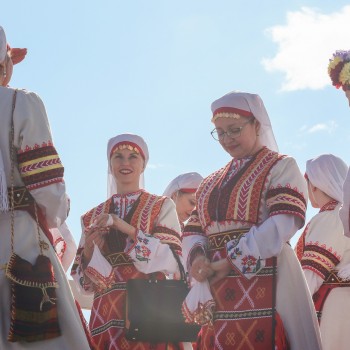
Song and Dance Festival
Date: July
The most significant events held in the Baltic States are the UNESCO-listed song and dance festivals held in mid-summer every five years in Estonia. The song and dance festival is aptly called the reunion of the family. A torch is lit in Tartu during the festival, the festival's birthplace. Like an Olympic fire, the torch travels through the whole of Estonia to Tallinn, where thousands of folk dancers first wait for that fire for a dance performance at Kalev Stadium.
All the party participants will come to the song festival in a festive procession. The procession is followed by a song festival, which begins with Aleksander Kunileid's song "Dawn." The vital part of the dance festival is the authentic Estonian folk costumes that make the dance stadium shine beautifully.
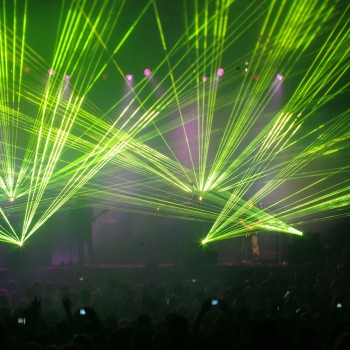
July
Date: Õllesummer Festival
Õllesummer festival is one of Estonia's most widespread festivals in the Baltic region, attracting thousands of locals and visitors to Tallinn to enjoy live music and lots of beer held alongside many of the town's musical events. The city is packed with tents filled with food stalls and beer, fun, games for the young, and live entertainment. Local groups perform while beverages overflow on the Tallinn Song Festival Grounds.
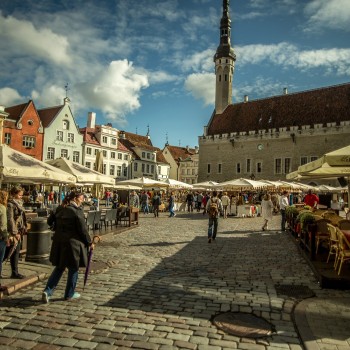
Tallinn Black Nights Film Festival
Date: November and December
Tallinn Black Nights Film Festival is one of Estonia's most famous film festivals. It is an annual film festival in Estonia enjoyed by every movie fan. It is the only film festival conducted in the northern part of Estonia that holds accreditation by FIAPF. These feature films are from different countries and not just Estonia. It is considered the grandest and the most anticipated film festival in northern Europe. From November to December, this festival eases long winter nights with good theater. The highlight is a competition recognizing the best of Estonia's filmmaking industry.
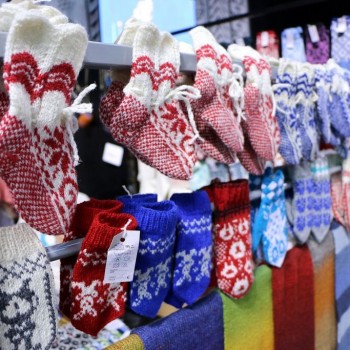
St. Martin’s Day Fair
Date: mid-November
St. Martin’s Day Fair is Estonia’s largest handicraft and folkloristic lifestyle event. It features folk music, costumed dancing, feasts of local specialties, and handicrafts exhibits. Estonia’s best handicraft items are presented and sold at the fair, specialist workshops for handicraft lovers and crafts activities for children are organized.
Demonstrations of handicraft products and presentations of new books take place. Visitors can eat traditional Estonian food and listen to various folk music groups. St. Martin’s Day Fair always takes place during the weekend closest to St. Martin’s Day from Thursday to Sunday. The event culminates with a unique Friday evening program- the Handicraft Night.
Attractions / Top Sights
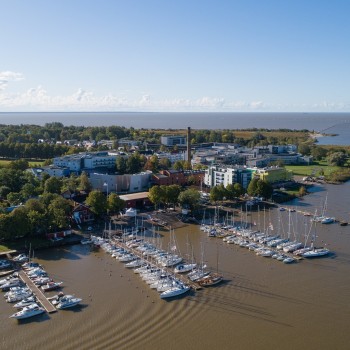
Parnu
When to visit: May to September
Parnu, one of the most significant towns in Estonia, is Estonia’s summer epicenter. This medieval town is situated on the shore of Pärnu Bay in the Baltic Sea in southwestern Estonia. The Pärnu River goes through the town to the Gulf of Riga. Parnu is famous for its vast sandy shores, magnificent hotels, and charming eateries.
Pärnu is also well-known for spas, from big water parks enjoyed by children to the closer historic bathhouses. A long broad beach is fringed by a beloved esplanade, ideal for walking, jogging, cycling, and roller skating. Close to it are some playing fields, water fountains, and plenty of recreation spots for kids. The river is perfect for water skiing, yachting, canoeing, or kayaking from the Pärnu river delta to the vast sea and neighboring small islands for those who love more entertainment.

Tallinn Old Town
When to visit: May to September
When to visit: https://whc.unesco.org/en/list/822
Tallinn Old Town is one of the world's best-preserved Hanseatic town centers and was home to wealthy merchants from Denmark and Germany in the 13th century. It is the oldest part of Tallinn, Estonia.
Old Town of Tallinn, with its cobblestone streets filled with charming cafes, stores, and medieval churches, became a UNESCO World Heritage Site in 1997, making Tallinn a wonderful tourist attraction in Estonia.
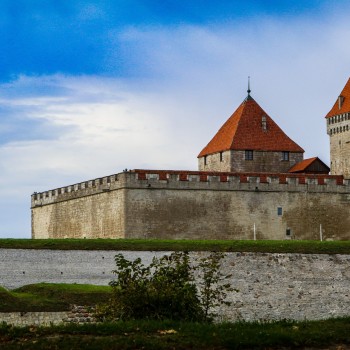
Kuressaare Episcopal Castle
When to visit: May to September
Built during the 14th–19th century, Kuressaare Episcopal Castle, also known as Kuressaare Castle, is one of Estonia's most exciting and best-preserved fortresses. At the same time, the castle became one of the most remarkable buildings in Northern Europe. The castle is home to a historic Saaremaa Museum, one of the oldest and most prominent museums in Estonia, founded in 1865 and is visited by thousands of people every year. The museum tries to exhibit the essence of the castle and tells its story to the whole world.
Undoubtedly, the castle is worth visiting. Tourists can watch and participate in traditional activities, like archery, pottery making, musical performances, and firing Estonia's oldest working cannon, mainly during the busy summer months.

Vilsandi National Park
When to visit: May to September
Located in Saare County at the southern portion of Estonia, Vilsandi National Park incorporates a section of the Vilsandi Island, nearly 150 tiny islands, the Harilaid peninsula, and areas of western Saaremaa. Created in 1910, Vilsandi is the most ancient Baltic defended region and one of enormous Estonia’s seals resting spots. The park has 30 stunning orchids and
juniper shrubs and fossils. Furthermore, it has a beautiful tourist center with a vast collection of fossils, and in addition, the park is a scenic hiking spot and horseback riding at the Reinu stables.
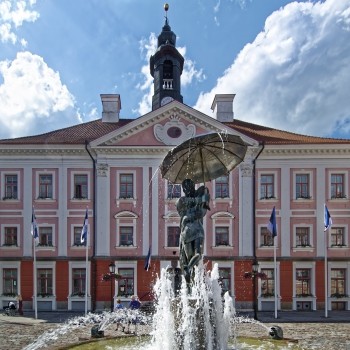
Tartu
When to visit: March to June or September to November
One of the enormous cities of Estonia, Tartu is home to its highly distinguished 17th-century, the University of Tartu, the oldest university in Northern Europe. The university is the town’s pounding heart with the vibrant ambiance learners always make. At the same time, you can also find the old city with the university’s fantastic prominent edifices in neoclassical style and the lively Town Hall Square, well-known for the Kissing Students fountain and a wide range of entertainment and eccentric cafes. Moreover, Tartu houses some magnificent museums and vibrant nightlife. The contemporary Science Centre with a 4D cinema and a broad range of hands-on displays is not far away.
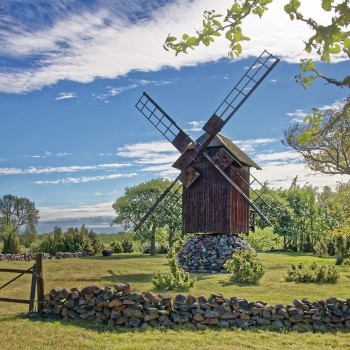
Open Air Museum
One of the fabulous places in Tartu, showcasing the country's rural architecture and way of life, an impressive Estonian Open Air Museum is a life-sized reconstruction of an 18th-19th century rural/fishing village, comprising the church, tavern, schoolhouse, several mills, a fire station, twelve farmyards, and net sheds Kolu Kõrts.
In summer, the time-warping effect is highlighted by staff in period costumes performing traditional activities among the wooden farmhouses and windmills. Different activities and demonstrations such as weaving, blacksmithing, and the like are scheduled, and an old wooden tavern, Kolu Kõrts, serves traditional Estonian cuisine.
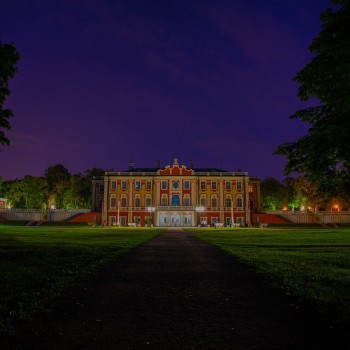
Kadriorg Art Museum
When to visit: May to September
When to visit: https://kadriorumuuseum.ekm.ee/en/#
The Kadriorg Art Museum is the only museum in Estonia displaying hundreds of best European and Russian artworks and collections from the 16th to the 18th centuries and Russian arts from the 18th to early 20th centuries. Interpreting the art of old masters is also the focus of its exhibitions and educational programs.
The museum is situated in Kadriorg Palace, a magnificence baroque built by Peter the Great between 1718 and 1736. Surrounding the fabulous pink Kadriorg Palace are several beautiful palace side buildings and a lovely French-style formal garden.

Alexander Nervsky Orthodox Cathedral
When to visit: In summer and spring
Estonia's main Russian Orthodox cathedral, Alexander Nervsky Orthodox Cathedral, is a breathtaking, onion-domed structure perched atop Toompea Hill, constructed in 1900. Designed by respected St. Petersburg architect Mikhail Preobrazhenski, the church is intricately decorated eclectically. The interior is filled with mosaics and icons. Amazingly, it's the most splendid and most wealthy Orthodox church in Tallinn.
The church's towers' hold Tallinn's most influential church bell ensemble, consisting of 11 bells, including the largest in Tallinn, weighing 15 tonnes. You can hear the entire ensemble playing before each service. It is undoubtedly one of the famous tourist attractions in Tallinn.
















